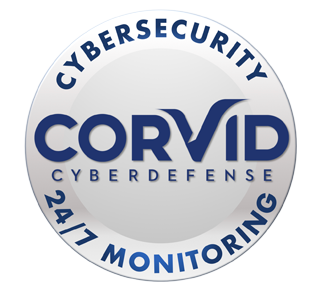 Revisit, Revise, and Strengthen Your Financial Plan for the Remainder of 2024
Revisit, Revise, and Strengthen Your Financial Plan for the Remainder of 2024
Planning for retirement demands a lot from us – and it’s not a one-time job. Whether it be our time, energy, or financial resources, our retirement needs are always evolving, and we must nurture our savings consistently over the years. If you’ve been taking a more hand-off, set-and-forget approach recently, the middle of the calendar year offers a timely opportunity to reflect, reassess, and make any necessary changes so that you can strengthen your financial foundation for the next six months and beyond. If you’re unsure where to start, try using this mid-year retirement planning checklist to kickstart the process.
Step #1. Know Where You Stand
The first step of this retirement planning checklist isn’t focused specifically on retirement. That’s because, before you can strengthen your retirement plans, you must first gain a clear understanding of your overall financial situation. Managing your finances can sometimes be a source of concern, particularly if you have not reviewed them in a while. However, you’ll feel better once you know exactly where you stand. Begin by collecting all relevant documents pertaining to your bank accounts, outstanding loans, debts, and any other elements contributing to your financial landscape. This will help you to compile a detailed list of your assets and liabilities, forming the cornerstone for subsequent steps in our retirement planning checklist.
Step #2. Clarify Your Retirement Goals
Now that you know where you’re starting from, it’s time to determine your desired destination. That means you’ll need to clearly outline your retirement goals. Ask yourself questions such as when you plan to retire, what type of lifestyle you envision, and which activities you want to pursue. Establishing specific and measurable goals will help tailor your savings and investment strategies to meet your unique retirement objectives.
Step #3. Review and Adjust Your Budget
If the first two steps were about determining where you’re beginning and ending, this step is dedicated to constructing a roadmap that will lead you to your final destination – your dream retirement! Regardless of your current financial situation, maintaining a budget can be a helpful tool in working towards your financial goals. If you find yourself uncertain about where to begin or concerned about staying disciplined, there are numerous helpful apps and online resources available to assist you through each stage of the process.
Step #4. Maximize Account Contributions
Now that you’re on your way, be sure that you’re taking advantage of any employer-sponsored retirement plans, such as 401(k)s or 403(b)s, by contributing the maximum amount allowed. These contributions not only reduce your taxable income but also grow tax-deferred until withdrawal. If you’re self-employed or your employer doesn’t offer a retirement plan, consider opening an Individual Retirement Account (IRA) and contributing regularly. Even if you think you have your contributions set, use this step in the retirement planning checklist to assess whether you can contribute more to max-out your options.
Step #5. Rebalance Your Portfolio
Investing can be a beneficial strategy for wealth building, but it does come with inherent risks. Take some time now to diversify your investment portfolio to mitigate risk. Consider a mix of stocks, bonds, and other assets that align with your risk tolerance and retirement timeline. Don’t forget to periodically rebalance your portfolio to maintain an optimal asset allocation and adjust it as needed based on changing market conditions and your risk profile. A financial advisor can be helpful as you navigate this step in the retirement planning checklist.
Step #6. Fortify Your Emergency Fund
No matter how prepared you are, there’s always the chance that something unexpected could happen, leaving you with a bill that you weren’t ready to pay. To help protect your retirement savings, it’s important that you have a solid emergency fund set aside. Generally, you want to aim to have at least three to six months’ worth of living expenses set aside in a liquid and easily accessible account. This fund will serve as a financial safety net, preventing you from dipping into your retirement savings in times of unexpected expenses.
Step #7. Plan for Healthcare Costs
Health expenses often increase in retirement, making them one of the biggest threats to retirees’ financial security, so it’s crucial to plan for healthcare costs. Review your current health insurance coverage and consider additional options, such as long-term care insurance, to provide additional protection. If you’re not yet eligible for Medicare, use this step in the retirement planning checklist to explore other healthcare options to bridge the gap.
Step #8. Get Serious About Your Debt
High-interest debt can erode your retirement savings, so strive to enter retirement debt-free or with minimal debt. To achieve this, develop a plan to pay off outstanding debts, focusing on high-interest debts first. This will free up additional funds for retirement savings and ensure a more stable financial future.
Step #9. Choose a Social Security Benefits Strategy
Social Security benefits can significantly boost your income in retirement, especially when you get strategic about how you claim them to begin with. For instance, delaying the start of your benefits can lead to higher monthly payments. So, take some time to familiarize yourself with Social Security benefits and strategize the optimal time to claim them based on your financial situation. You’ll want to consider factors such as your health, life expectancy, and overall financial situation when deciding.
Step #10. Reassess Your Estate Plans
Estate planning helps you make certain that your assets are distributed according to your wishes, minimizing potential complications for your loved ones. Don’t forget to update or create essential estate planning documents at this point in your retirement planning checklist. This includes wills, trusts, and powers of attorney. Life changes quickly at times, so it’s important that you regularly review and designate beneficiaries for your retirement accounts and life insurance policies.
Remaining Hands-On with Your Retirement Plan Throughout the Years
Retirement planning is a continuous process that requires careful consideration and adjustment. By taking time mid-year to use a comprehensive checklist, you lay the groundwork for an enjoyable retirement. Be sure that you’re regularly revisiting and updating your retirement plan to adapt to changing circumstances, ensuring that you stay on track to achieve your financial goals. Remember, the key to successful retirement planning is proactive and informed decision-making.
Sources:
- [1] https://www.nerdwallet.com/article/finance/best-budget-apps
- [2] https://www.investopedia.com/terms/1/403bplan.asp























 Megan Jones joined the ILG Financial team in 2020 as marketing director. Megan and her husband live in Fredericksburg, VA with their German Short Haired Pointer, Gus. Megan is a graduate of Longwood University and holds a degree in communications. Megan is the oldest of Dave Lopez’s three children and not only enjoys working alongside her father, but also with her cousin, Chase, who joined the ILG Financial team in 2020 as an advisor. Megan is also a fully licensed Life, Health, and Annuity agent. When not at work, Megan enjoys sitting on the back porch with family and friends enjoying food and music.
Megan Jones joined the ILG Financial team in 2020 as marketing director. Megan and her husband live in Fredericksburg, VA with their German Short Haired Pointer, Gus. Megan is a graduate of Longwood University and holds a degree in communications. Megan is the oldest of Dave Lopez’s three children and not only enjoys working alongside her father, but also with her cousin, Chase, who joined the ILG Financial team in 2020 as an advisor. Megan is also a fully licensed Life, Health, and Annuity agent. When not at work, Megan enjoys sitting on the back porch with family and friends enjoying food and music. Chase Lopez joined the ILG Financial team in 2020 as an advisor. Chase is a 2016 James Madison University graduate with a degree in management. Chase has been trained under the tutelage of Dave Lopez, who is not only the founder and managing member of ILG Financial, but also is Chase’s uncle and godfather. He also enjoys working alongside his cousin, Megan, who is Dave’s daughter.
Chase Lopez joined the ILG Financial team in 2020 as an advisor. Chase is a 2016 James Madison University graduate with a degree in management. Chase has been trained under the tutelage of Dave Lopez, who is not only the founder and managing member of ILG Financial, but also is Chase’s uncle and godfather. He also enjoys working alongside his cousin, Megan, who is Dave’s daughter. Amy Anderson joined the ILG Financial team in 2023 as the client relations coordinator. Her responsibilities include scheduling of appointments, annual check-up notifications, and annuity and required minimum distribution assistance. She is a graduate of Harding University with a degree in Computer Information Systems. Amy and her husband have two children and she enjoys reading, crocheting, music and spending time with her family.
Amy Anderson joined the ILG Financial team in 2023 as the client relations coordinator. Her responsibilities include scheduling of appointments, annual check-up notifications, and annuity and required minimum distribution assistance. She is a graduate of Harding University with a degree in Computer Information Systems. Amy and her husband have two children and she enjoys reading, crocheting, music and spending time with her family. Jessica Carson joined the ILG Financial team in 2018 as an agent. Jessica and her husband have four children, two dogs, 3 barn cats, 5 chickens, and three parakeets. She indeed loves her children and pets! When not at work, Jessica enjoys playing the piano and cello as well as traveling and spending time outside with her family, hiking, fishing, and boating.
Jessica Carson joined the ILG Financial team in 2018 as an agent. Jessica and her husband have four children, two dogs, 3 barn cats, 5 chickens, and three parakeets. She indeed loves her children and pets! When not at work, Jessica enjoys playing the piano and cello as well as traveling and spending time outside with her family, hiking, fishing, and boating. Terri Center joined the ILG Financial team in 2019 as client services manager. She handles client records, application processing, and gathering information to provide a professional and friendly experience with all of our clients. Terri is a graduate of Oakland University. She is married and has two children. She enjoys hiking, family time, and puzzle challenging video games. She also likes to share her creativity in her canvas paintings and sewing projects.
Terri Center joined the ILG Financial team in 2019 as client services manager. She handles client records, application processing, and gathering information to provide a professional and friendly experience with all of our clients. Terri is a graduate of Oakland University. She is married and has two children. She enjoys hiking, family time, and puzzle challenging video games. She also likes to share her creativity in her canvas paintings and sewing projects.